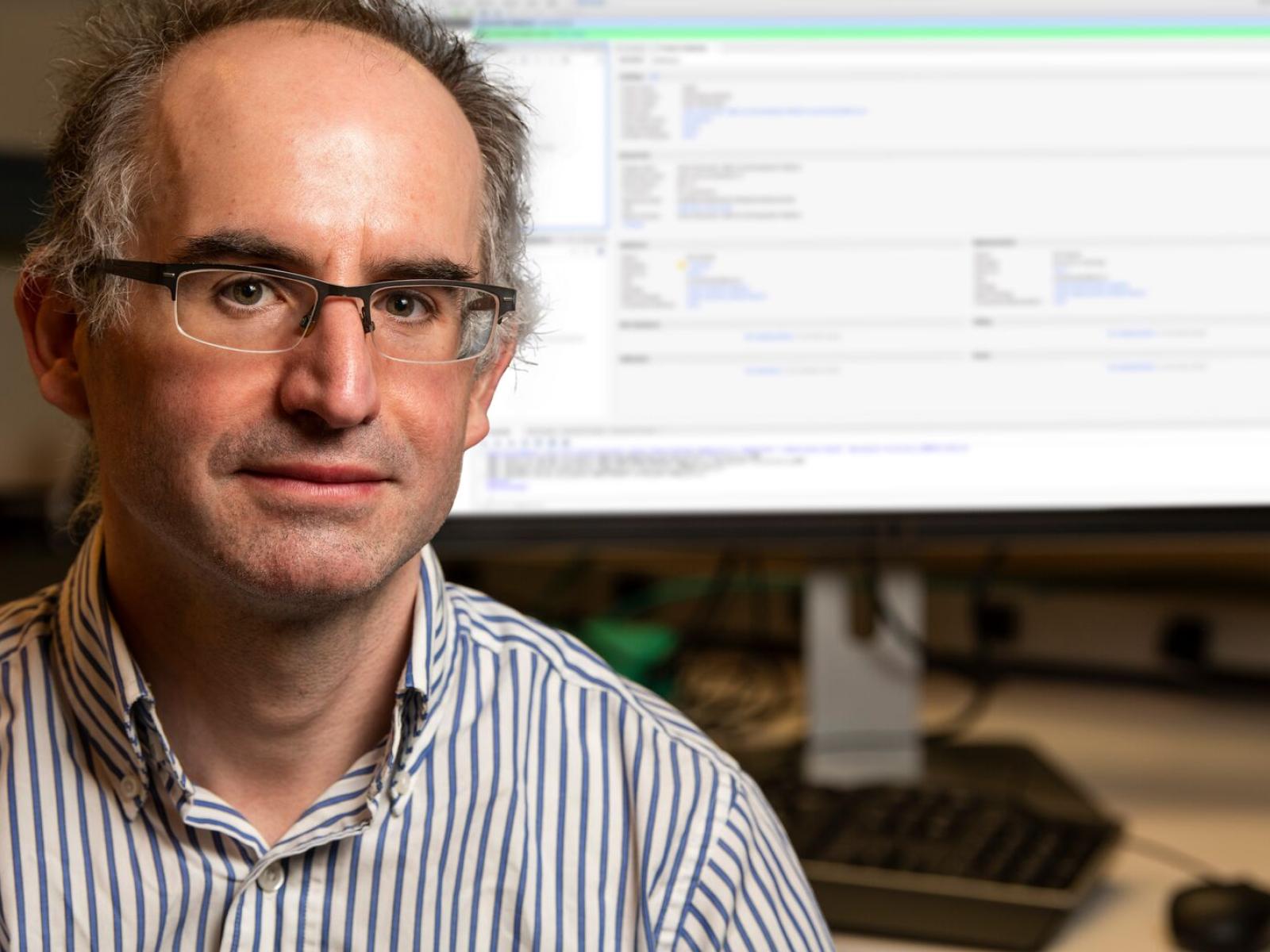Tumeo Takes Computational Chemistry to the Extremes
The ChemComp project was awarded for Exploratory Research in Extreme Scale Science

Antonino Tumeo will lead the ChemComp project for the Advanced Scientific Computing Research program.
(Photo by Andrea Starr | Pacific Northwest National Laboratory)
Living cells are incredibly complex. Millions to billions of biochemical reactions occur every second inside each cell. Cells have evolved to carry out these reactions in an energy-efficient and parallel manner.
Parallelism and energy-efficiency are also important components in computing. Through the ChemComp project, Pacific Northwest National Laboratory (PNNL) Computer Scientist Antonino Tumeo and his team will build a compilation framework for computing with chemical reaction networks to exploit the optimization inherent to biological cells. The project has recently been selected for funding by the Department of Energy (DOE) Advanced Scientific Computing Research (ASCR) program.
The idea of using biological molecules as hardware for computation has existed for decades. In 1994, Computer Scientist Leonard Adleman showed that DNA could be used to encode graphs and solved a Hamiltonian path problem using the biomolecule. Since then, computer scientists have developed a variety of techniques that are applicable to the design of complex chemical systems.
Chemical reaction networks consist of a set of reactions between chemical species. Their reaction rates can be modeled by systems of ordinary differential equations, with each network giving rise to its own complicated system of equations. Tumeo and his team will develop programs whose compilation process maps to the differential equations described by chemical reaction networks. Thus, the chemical reactions will be able to effectively execute the programs as they evolve with time.
"It has been demonstrated that chemical reaction networks are Turing complete and can compute anything, " said Tumeo. "However, we face significant challenges in realizing actual chemical reaction computing machines that can solve systems of equations different from the underlying chemistry".
Through ChemComp, Tumeo and his team will describe chemical reactions as mathematical operators in a modern compiler infrastructure and develop a compilation flow that converts mathematical operations to chemical operations of known behavior—essentially translating ordinary differential equations into chemical reactions. This will provide the basis for a higher-level programming abstraction for chemical reaction networks computing machines that could perform other types of computations beyond those inherent to the physical system.
The ChemComp project will provide an integrated approach to formalize, model, and optimize chemical reaction networks for computational work. It will help scientists explore the computational capacity of chemical operations by exposing the execution speed, energy efficiency, and scalability of chemical reaction networks for computation, leading to new and improved biochemical computing technologies.
ChemComp is an exploratory research project that will last two years and will be entirely performed by PNNL researchers. The team includes a compiler expert, Nicolas Bohm Agostini, and experts in biochemistry, William Cannon and Connah Johnson. Research linking chemistry to computing is one focus of the recently launched Computational and Theoretical Chemistry Institute at PNNL, which Tumeo is a part of.
Published: October 30, 2023